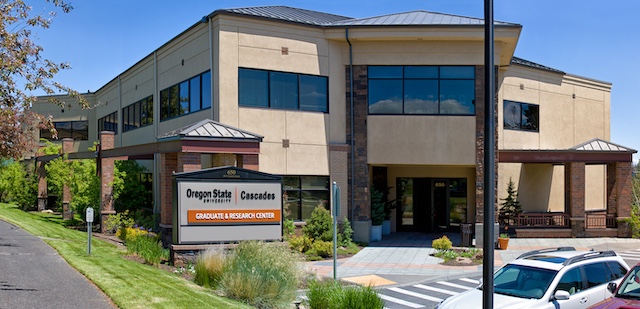Visiting Pearl Harbor, 75 years later
Published 12:00 am Sunday, December 4, 2016

- Visiting Pearl Harbor, 75 years later
HONOLULU — Seventy-five years ago this week, the United States was suddenly and brutally drawn into World War II by Japan’s early-morning attack on the Pacific Fleet at Pearl Harbor, on the Hawaiian island of Oahu.
The story has been told countless times, in many ways. What is certain are the details: The surprise attack by the Imperial Japanese Navy began shortly before 8 a.m. on Dec. 7, 1941. Two waves of Japanese fighter planes, bombers and torpedo planes — more than 350 aircraft, launched from six aircraft carriers — devastated the American naval base, sinking four of the eight battleships along with numerous other ships and 188 U.S. aircraft.
Trending
In all, 2,335 American service personnel and 68 civilians were killed, and 1,178 others were wounded. Nearly half of the casualties occurred aboard the USS Arizona when a bomb detonated in a powder magazine, causing the ship to explode and sink. The wreck of that battleship still lies at the bottom of Pearl Harbor: Damaged too badly for salvage, it was designated a national memorial in 1962.
Today, the watery grave of the Arizona is the main attraction of a visit to Pearl Harbor — a destination that also includes the USS Missouri battleship, the USS Bowfin submarine, the Pacific Aviation Museum and other museums and memorials.
Located just west of Honolulu International Airport on Oahu’s south shore, Pearl Harbor extends inland from its narrow mouth across more than 10 square miles. The deep-water anchorage remains one of the finest natural harbors in the Pacific and the home of the U.S. Navy’s Pacific Fleet.
Photographer Barb Gonzalez and I visited earlier this year when we were in Hawaii for a wedding. We spent a full day at Pearl Harbor. Although we only had to park our rental car once — at the Pearl Harbor Visitor Center, hub for all of the significant historic sites here — we felt rushed to pack all of its attractions into an eight-hour visit.
USS Arizona
The Arizona is indisputably the star of the show. Even though most visitors only know of the event from their school history books, it’s an incredibly moving experience, especially when shared with aged veterans who lived through it.
Trending
Formally the WWII Valor in the Pacific National Monument, the USS Arizona Memorial consists of a distinctive concave superstructure, gleaming white, that straddles the ship’s hull without touching it. Dedicated on Memorial Day 1962 with the Stars and Stripes flying above, it has welcomed more than 1½ million guests in any given year since.
Programs begin every 15 minutes, from 7:30 a.m. until 3 p.m., except for one half-hour lunch break. As an introduction, a superb 23-minute documentary film includes newsreel footage of the 1941 attack. The movie also describes the precursors of the attack and the events that followed, supplementing a pair of exhibits in the visitor center.
The real adventure began as our ticketed group was ushered from the theater onto an 80-passenger naval launch for a short voyage across the harbor’s East Loch to the Arizona Memorial, which had been moored in “Battleship Row” beside Ford Island Naval Air Station.
As we disembarked into an entryway, we were greeted by the symbolic Tree of Life window, built into the 184-foot-long memorial by Honolulu architect Alfred Preis. He chose the concave design to symbolize America’s initial defeat and ultimate victory in World War II.
The memorial’s Entry Room flies the flags of the nine states for whom Pearl Harbor’s great battleships were named. This opens to the Assembly Room, an open area where ceremonies are held and where visitors may gaze upon the remains of the USS Arizona below.
The glaze upon the water, where tropical fish skitter over coral-crusted iron, is fuel oil, which after three-quarters of a century continues to seep from the wreckage — anywhere from 2 to 9 quarts per day. It is sometimes referred as “the tears of the Arizona.”
Visitors speak in hushed tones in this area, but they are mostly speechless in the Shrine Room. Here, on a marble wall, are engraved the names of the 1,177 service members who died aboard the Arizona, as well as those survivors who later were interred here. As near to being sacred as a national monument might be, this nonsectarian chapel is a place of reverence and contemplation. There’s a pervasive sense of both loss and gratitude in these names, mixed with pride in American freedom.
You’ll have about 30 minutes aboard before your boat returns to the visitor center. The program lasts about 75 minutes. While the tour is free, $7.50 buys a narrated audio headset tour with a great deal of additional information.
We made a reservation to tour the Arizona, which may only be accessed by a U.S. Navy tour boat operated by the National Park Service. It’s free to visit, but tickets are essential. (You may book up to two months ahead of your visit online at www.recreation.gov or by calling 877-444-6777. A $1.50 convenience fee is charged.) Four thousand tickets are allotted daily — with 1,300 walk-in tickets available on a first-come, first-served basis each day, beginning at 7 a.m., until they are gone. The remainder are reserved by individuals, tour groups, schools, military units and other groups.
Bowfin submarine
Besides the Arizona tour, visits to other Pearl Harbor historic sites may also be ticketed at the visitor center. These include the Battleship Missouri Memorial, the USS Oklahoma and USS Utah memorials, the USS Bowfin Submarine Museum & Park and the Pacific Aviation Museum Pearl Harbor. All of these may be readily seen by shuttle bus from the visitor center.
The USS Bowfin, in fact, is mere steps from the visitor center. Nicknamed “The Pearl Harbor Avenger” when it was launched exactly one year after the attack, the Balao-class sub undertook nine war patrols in the Pacific Theater, sinking 44 enemy vessels over the next three years. It remained in active service until 1971.
The Bowfin was declared a National Historic Landmark in 1986, five years after it opened to the public as a museum.
Visitors today may tour eight compartments of what is essentially a metal tube, 312 feet long and 16 feet in diameter. As many as 80 submariners, including 10 officers, lived aboard the vessel for six weeks at a time or longer, dealing with claustrophobia along with the Imperial Japanese Navy. Self-guided tours illuminate both elements.
We entered through the forward torpedo room, where we found six torpedoes in tubes, ready for firing, and 10 reloads on racks. Fourteen sailors slept with these weapons. This room opened to the forward battery room, sitting over the 126 lead acid batteries that powered the ship. Atop the batteries, officers ate, slept and performed administrative chores.
Third was the control room, which handled diving and surfacing; a navigational master-gyro compass was at its heart, a radio room nearby. We found it helpful to be neither too tall nor too broad in squeezing through the portals between these compartments.
The galley and crew’s mess, where up to two dozen crew could be served at one time, adjoined the main sleeping area and the heads (toilet facilities). As there were only 36 bunks, sleeping was done in shifts.
Compartments 5 and 6 were nearly identical engine rooms, each with two 16-cylinder diesel engines. Temperatures here were often exceeded 120 degrees. Next came the maneuvering room, where speed changes were executed, and the aft torpedo room, which had eight more torpedoes, four of them in tubes ready for firing. Mines could also be laid from this aft chamber.
On the top side, three naval guns were prepared for surface fighting. The conning tower, directly above the control room, served as the captain’s post during battle stations, when the sub was submerged.
Bowfin tours begin in the Pacific Submarine Museum. A self-guided tour covers the entire history of submarine warfare, beginning with pioneering Revolutionary War attempts and carrying through more sophisticated World War I and World War II vessels, right up to modern nuclear submarines.
A harbor-side plaza features the Waterfront Memorial, which honors more than 3,600 submarine crew members who lost their lives in battle, and recalls the 52 U.S. submarines lost during World War II. Visitors may also squint through a periscope in a conning tower, inspect a submarine rescue chamber and check out a “kaiten,” a manned Japanese suicide torpedo.
The ‘Mighty Mo’
You won’t want to miss the Battleship Missouri, reached by the Ford Island shuttle bus from the visitor center. The “Mighty Mo” is best known as the place where the Empire of Japan surrendered to General Douglas MacArthur on Sept. 2, 1945, in Tokyo Bay. As such, it is a designated national historic site.
The last U.S. battleship ever built, the USS Missouri, was launched from Brooklyn, New York, on Jan. 29, 1944. It fought in the battles of Iwo Jima and Okinawa and shelled Japan’s home islands before MacArthur and Admiral Chester Nimitz accepted the surrender of Japan, represented by its foreign minister. Military leaders of nine other leading Allied powers witnessed the ceremony aboard the Missouri.
The great ship — 887 feet long, 209 feet high, 108 feet wide — continued to serve the U.S. Navy for many more years. It fought in the Korean War and in the Persian Gulf before being decommissioned in 1992, and was returned in 1998 to Hawaii as a museum ship that overlooks the USS Arizona from Ford Island.
There are several ways to tour “Mighty Mo,” including a 35-minute narrated tour with a guide who walks in the footsteps of General MacArthur and shows exactly where the treaty was signed. Those who want to learn more, including naval veterans, may be intrigued by the 75-minute Heart of the Missouri Tour: Participants descend into the engine room to see the mechanics behind this Iowa-class battleship, designed for speed and firepower.
Audio-phone narratives are useful on self-guided tours of up to two hours. The Main Deck route has interpretive displays describing the Missouri’s historical significance. The Above Decks tour route takes visitors to the command and control center of the ship, including the captain’s bridge, and to the main gun battery. (The ship carried 21 guns with a range of 23 miles, plus 48 missiles and four anti-aircraft weapons.) The Below Decks tour highlights crew quarters.
Also on Ford Island are the USS Oklahoma and USS Utah memorials to World War I-era battleships moored on Battleship Row at the time of the 1941 attack. The Oklahoma also served during the Spanish Civil War before she was assigned to the Pacific, where she was struck by five torpedoes in the Pearl Harbor attack. Within 12 minutes, she had rolled port-side, trapping many of her crew inside. In all, 429 died, second only to the Arizona. The hull later sank in the mid-Pacific while being towed to California for salvage. A black-granite memorial, dedicated in 2006, stands near the USS Missouri.
The Utah, commissioned in 1911, was a gunnery training ship. It was also taken down by a torpedo during the Pearl Harbor attack. Its partially submerged hulk still rests in Pearl Harbor, rusting away with the remains of 58 men trapped inside. A memorial in honor of the USS Utah crew was built in 1972 on the Ford Island shore, adjacent to the wreck.
Aviation museum
The Pacific Aviation Museum Pearl Harbor opened 10 years ago on Pearl Harbor Day, after having originally been installed in the Honolulu International Airport in the 1980s. By the time we got here, there was barely time left to look in the doors. It was obvious that we might have needed to devote up to three hours of additional time.
Located on Ford Island, a one-time sugar-cane plantation converted to an aviation base during World War I, the museum comprises two repurposed seaplane hangars and a control tower that still bears artillery scars from 1941.
In all, 34 aircraft are displayed, not counting four (a variable number) in a restoration shop. Shuttle buses drop visitors at Hangar 37, where a 12-minute film introduces the Pacific air war. A Japanese Zero aircraft greets arrivals to the exhibit area, which also includes American craft used in Japan, Midway and Guadalcanal.
Hangar 79 displays modern jets and historic helicopters, along with Soviet-designed MiG-15 aircraft used versus American F-86 Sabres in the Korean War. Interactive combat flight simulators encourage visitors to become virtual World War II pilots, taking off and landing on an aircraft carrier, and engaging in a dogfight with an enemy.
Just like Mainland U.S. cities, Honolulu has its rush hours. When traveling from a Waikiki hotel to Pearl Harbor, it’s wise to go early if you plan to make a full day of it: The visitor center opens at 7 a.m. I suggest focusing on the USS Arizona and the USS Bowfin in the morning, and after a lunch stop (most of these attractions have cafes), board the Ford Island shuttle to the USS Missouri and the Pacific Aviation Museum in the afternoon.
If the latter sites aren’t on your itinerary, late morning or early afternoon work just as well for a visit to the Arizona.
— John Gottberg Anderson can be reached at janderson@bendbulletin.com.








